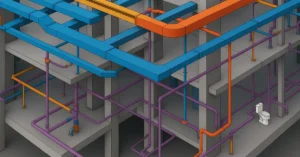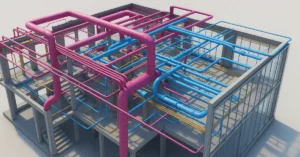
Design Development in Villa Construction: Crafting the Blueprint
Design development marks a pivotal phase in the journey of designing a villa as an architect. It is during this stage that the abstract concepts and schematic designs begin to take shape, evolving into detailed plans that lay the foundation for the construction of a luxurious and functional living space. In this comprehensive guide, we will delve into the intricacies of design development, exploring the processes, considerations, and best practices that architects employ to transform ideas into reality.
Understanding Design Development
Design development is the phase in which the initial schematic designs are refined and elaborated upon to create a comprehensive set of drawings and specifications. These detailed documents serve as the blueprint for the construction of the villa, guiding contractors and subcontractors in the execution of the project. Design development encompasses a wide range of tasks, including refining floor plans, elevations, and 3D models, integrating structural, mechanical, and electrical systems, specifying materials and finishes, and ensuring the feasibility and functionality of the design.
Refining the Design
One of the primary objectives of design development is to refine and optimize the initial schematic designs to ensure that they meet the requirements and expectations of the client while adhering to regulatory standards and best practices. This involves a thorough review and analysis of the schematic designs, identifying areas for improvement and optimization. Architects may need to make adjustments to the floor plans, elevations, and spatial arrangements to enhance circulation patterns, optimize room relationships, and improve the overall functionality and flow of the villa.
Incorporating Structural and Mechanical Systems
In addition to refining the architectural elements of the design, design development also involves the integration of structural, mechanical, and electrical systems. Architects work closely with engineers and consultants to ensure that the villa is structurally sound and capable of supporting the intended design. This includes specifying structural components such as beams, columns, and foundations, as well as integrating mechanical and electrical systems such as HVAC, plumbing, and lighting to ensure optimal performance and functionality.
Specifying Materials and Finishes
Another critical aspect of design development is specifying materials and finishes for the villa. Architects carefully select materials and finishes that not only enhance the aesthetic appeal of the design but also meet the functional requirements of the space. This includes choosing appropriate building materials such as wood, stone, glass, and metal, as well as specifying finishes for flooring, walls, ceilings, and fixtures. Architects consider factors such as durability, sustainability, maintenance requirements, and budget constraints when selecting materials and finishes for the villa.
Ensuring Feasibility and Compliance
Throughout the design development process, architects must ensure that the proposed design is feasible and compliant with regulatory standards and building codes. This involves conducting thorough assessments and evaluations to identify any potential issues or discrepancies and address them proactively. Architects work closely with regulatory agencies, building inspectors, and other stakeholders to ensure that the villa design meets all relevant requirements and receives the necessary approvals and permits before proceeding with construction.
Iterative Design Refinement
Design development is an iterative process, often involving multiple rounds of refinement and revision to fine-tune the design and address any emerging challenges or opportunities. Architects collaborate closely with their clients, seeking feedback and input at each stage of the development process to ensure that the final design reflects their vision and preferences. This iterative approach allows architects to explore different design options, experiment with various materials and finishes, and incorporate new ideas and innovations into the project.
Streamlining Construction Processes
One of the key benefits of design development is its role in streamlining the construction process. By providing detailed drawings, specifications, and instructions, architects enable contractors and subcontractors to proceed with construction efficiently and effectively. Clear documentation helps minimize errors, reduce rework, and prevent delays, ultimately saving time and money for both the client and the project team. Design development also facilitates communication and collaboration among all stakeholders, fostering a cohesive and coordinated approach to construction.
Optimizing Spatial Functionality
During the design development phase, architects focus on optimizing the spatial functionality of the villa to ensure that it meets the needs and lifestyle preferences of its occupants. This involves carefully considering the layout of rooms, circulation patterns, and traffic flow to create a seamless and intuitive living environment. Architects pay close attention to factors such as ergonomics, accessibility, and flexibility, tailoring the design to accommodate diverse activities and user requirements. By maximizing spatial efficiency and functionality, architects enhance the overall usability and livability of the villa.
Enhancing Aesthetic Appeal
In addition to functional considerations, design development also involves enhancing the aesthetic appeal of the villa. Architects refine the architectural details, material selections, and finishes to create a cohesive and visually striking design that reflects the desired aesthetic style and character. Whether it’s incorporating elements of traditional or contemporary architecture, exploring different color palettes, or experimenting with textures and patterns, architects strive to create a visually compelling and harmonious composition that resonates with the client’s taste and personality.
Integrating Technology and Innovation
Design development provides an opportunity for architects to integrate technology and innovation into the villa design, enhancing its performance, efficiency, and sustainability. Architects leverage cutting-edge tools and techniques such as Building Information Modeling (BIM), parametric design, and virtual reality to visualize and simulate the design in a virtual environment. This allows architects to identify potential issues, test design solutions, and optimize performance parameters before construction begins. By embracing technology and innovation, architects can create smarter, more resilient, and more environmentally friendly villas that meet the evolving needs of their clients and communities.
Conclusion: Elevating Architectural Excellence
In conclusion, design development is a pivotal phase in the process of designing a villa as an architect, where the vision and aspirations of the client are translated into a tangible and actionable plan. Through iterative refinement, streamlined construction processes, spatial optimization, aesthetic enhancement, and the integration of technology and innovation, architects elevate the design to new heights of architectural excellence. By combining creativity, expertise, and attention to detail, architects can transform abstract concepts into breathtaking realities, delivering villas that inspire, delight, and endure for generations to come.
Click here to gain access to the full-villa course
If you’re interested in learning more about architecture firms in Europe, check out this comprehensive list of the top 50 firms compiled by Archgyan. From innovative startups to long-established industry leaders, this list has it all. Take a look and discover some of the most inspiring and influential architecture firms in Europe today.
If you’re interested in architecture and want to learn more about this amazing field, subscribe to our podcast on youtube
For more SketchUp tutorials, head to https://www.sketchupguru.com










